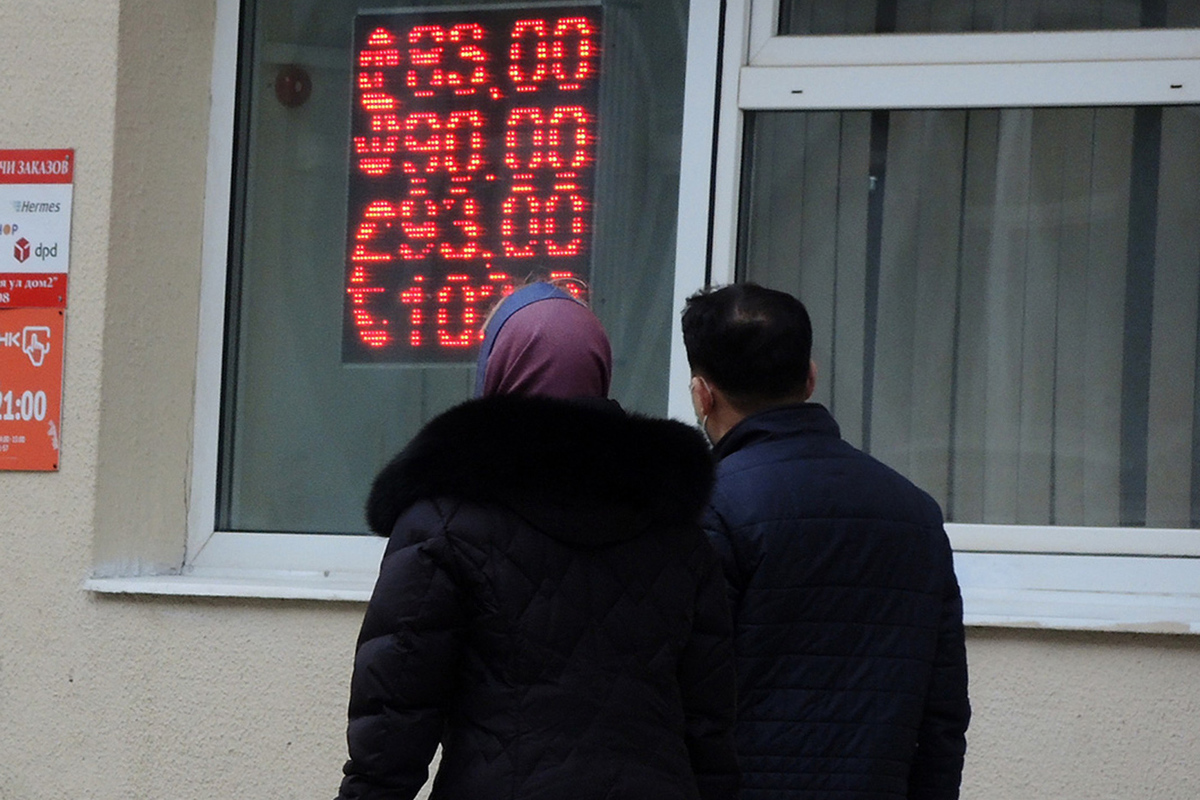The euro storms to three-digit heights: when the European currency will cost 100 rubles
[ad_1]

Economist Nikolaev: “This will happen in two or three months, closer to summer”
This year, the euro exchange rate has approached the 100-ruble mark more than ever before. At the Moscow Exchange auction on February 20, they fetched 99 rubles 78 kopecks for it. The situation on the foreign exchange market, seemingly frozen in a more or less stable position, has again begun to move and is again worrying Russians. Analysts are wondering: what will happen to the ruble in the near future and in the longer term, until the end of 2024?
Just a month ago, it seemed to many that the closer to the date of presidential elections, the more our ruble would strengthen, demonstrating, so to speak, its victorious march. Alas and ah! Recent stock trading on the Moscow Exchange shows its sluggish slide down. On February 20, according to the official exchange rate of the Central Bank, the dollar was 92.4 rubles, and the euro was 99.48. A little more, a little more – and the European currency will overcome the iconic hundred mark.
For some reason, it is believed that the mass consciousness of Russians simply cannot digest a three-digit number of rubles per dollar or euro. And that this cannot be allowed to happen. Meanwhile, in Moscow banks, euros have long been sold for an average of 100.6 rubles, and no one, at least among the happy buyers, is surprised by this and does not drink validol because of such a high exchange rate.
And last year, from July to October, the euro “jumped” at levels from 102 to 110 rubles. Many citizens have already forgotten about this, but professional players in the foreign exchange market remember well…
Meanwhile, exactly a month ago, the euro was trading on the stock exchange at 95.6 rubles. Today he is on the threshold of 100. If in a month he lost more than 4 rubles, then what should he do to hand over the remaining milestones up to the round three-digit number, that is, the last kopecks?
However, many citizens still believe that the financial authorities will not allow this, especially shortly before the elections… however, the current struggle of the ruble for its place in the sun (relative to the previous day, our national currency in dollars has fallen in price by about 14 kopecks , and the euro, on the contrary, has risen in price just as much) eloquently indicates that the government and the Central Bank are not pulling the exchange rate by secret strings and are not keeping the sweet dollar-euro pair on a short leash. The rate depends on the general economic situation in the country.
We ask the chief researcher at the Institute of Economics of the Russian Academy of Sciences, Igor Nikolaev: can the euro exceed a hundred in stock trading in the coming days?
“100 rubles per euro is a psychological threshold,” says the expert. – And when it is close, this to a certain extent activates the purchase and sale of currency, increases demand for it and ultimately affects the exchange rate. Although a plus of 30-50 kopecks to the current exchange rate is not something significant or a collapse for the ruble, which can somehow affect our lives.
– So in the foreseeable future the euro may exceed a hundred?
– Is it possible. But if this happens, the “European” will not go far and will return back very soon.
– So, the fall of the euro will not have time to be reflected in the macroeconomy? What about prices in stores?
– This will not affect any large or small indicators, including in stores. True, we have had situations when sellers rewrote price tags overnight. But this happened during some major collapses of the national currency. This is clearly not the case now. It’s more expensive for yourself to write prices first in one direction, then in the other.
– And in the longer term, how might events develop on the foreign exchange market?
– It cannot be ruled out that the euro may, not just for a short time, but already confidently go beyond 100 rubles. But this is in two or three months, closer to summer. Everything will depend on the general situation in the economy.
– Why does the mass consciousness of Russians not accept the three-digit value of a currency? What kind of stumbling block is this?
– Psychology matters for individuals. In people’s minds, it’s one thing to buy for 99 kopecks, and another thing to buy for 100. This is pure psychology. For financiers, the difference is small.
[ad_2]
Source link






